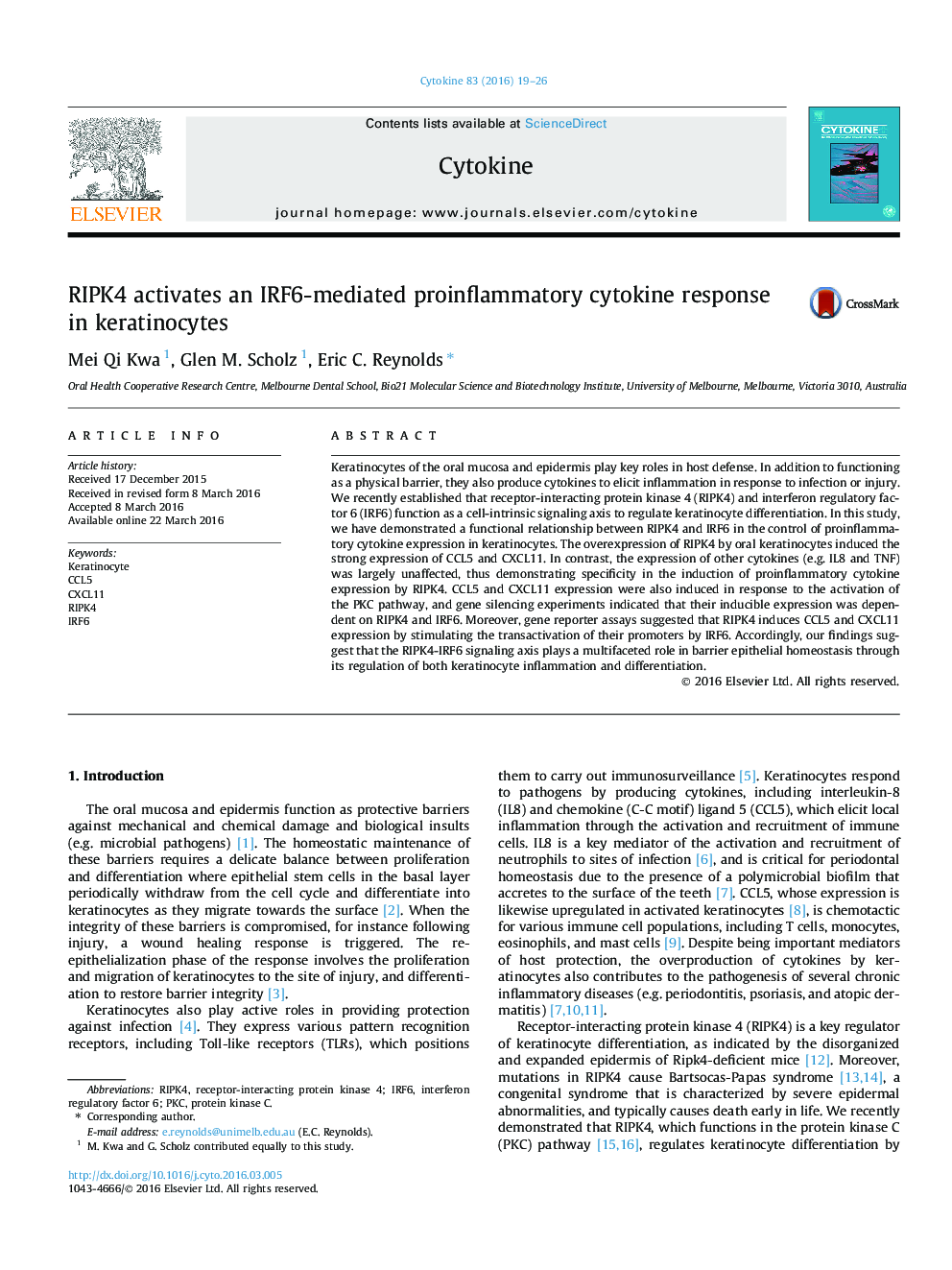| Article ID | Journal | Published Year | Pages | File Type |
|---|---|---|---|---|
| 5896632 | Cytokine | 2016 | 8 Pages |
â¢We investigated the regulation of inflammatory cytokine expression by RIPK4.â¢Overexpression of RIPK4 in keratinocytes is sufficient to induce CCL5 and CXCL11.â¢RIPK4 regulates CCL5 and CXCL11 expression downstream of PKC by activating IRF6.â¢Our findings indicate that RIPK4 is a key regulator of keratinocyte inflammation.
Keratinocytes of the oral mucosa and epidermis play key roles in host defense. In addition to functioning as a physical barrier, they also produce cytokines to elicit inflammation in response to infection or injury. We recently established that receptor-interacting protein kinase 4 (RIPK4) and interferon regulatory factor 6 (IRF6) function as a cell-intrinsic signaling axis to regulate keratinocyte differentiation. In this study, we have demonstrated a functional relationship between RIPK4 and IRF6 in the control of proinflammatory cytokine expression in keratinocytes. The overexpression of RIPK4 by oral keratinocytes induced the strong expression of CCL5 and CXCL11. In contrast, the expression of other cytokines (e.g. IL8 and TNF) was largely unaffected, thus demonstrating specificity in the induction of proinflammatory cytokine expression by RIPK4. CCL5 and CXCL11 expression were also induced in response to the activation of the PKC pathway, and gene silencing experiments indicated that their inducible expression was dependent on RIPK4 and IRF6. Moreover, gene reporter assays suggested that RIPK4 induces CCL5 and CXCL11 expression by stimulating the transactivation of their promoters by IRF6. Accordingly, our findings suggest that the RIPK4-IRF6 signaling axis plays a multifaceted role in barrier epithelial homeostasis through its regulation of both keratinocyte inflammation and differentiation.
